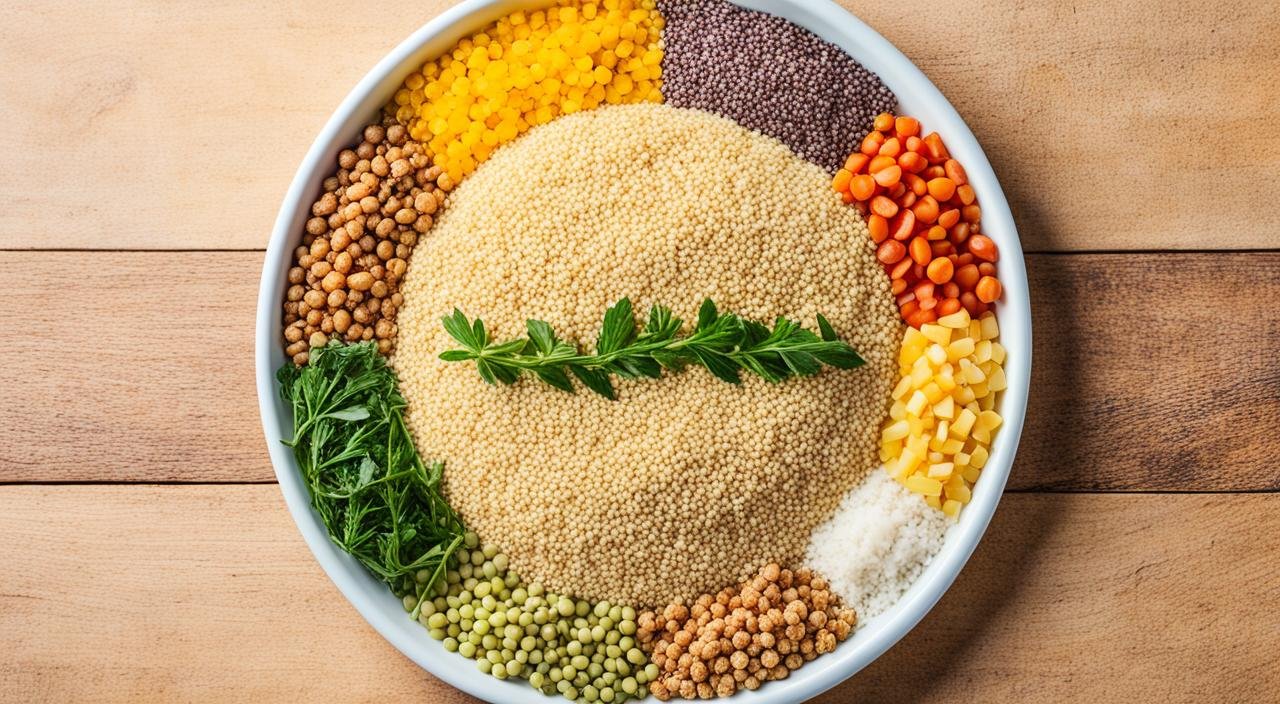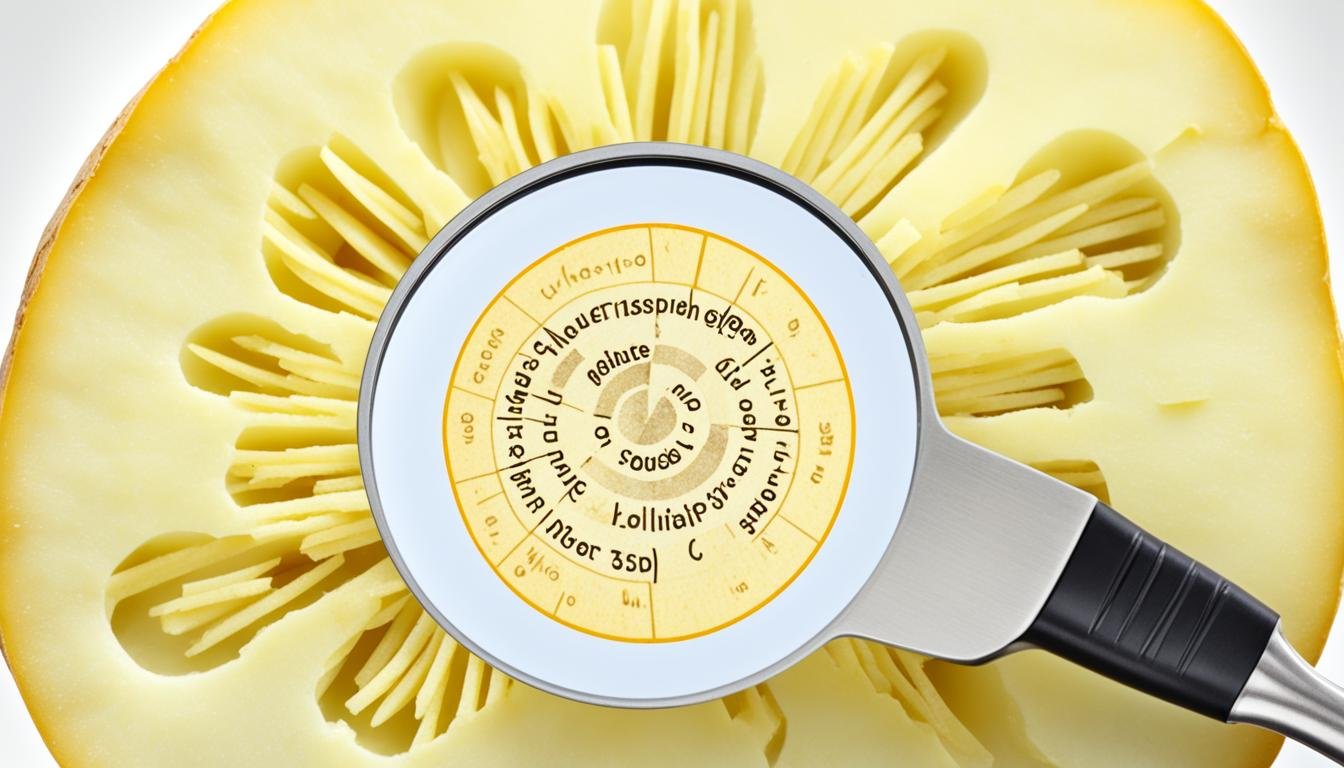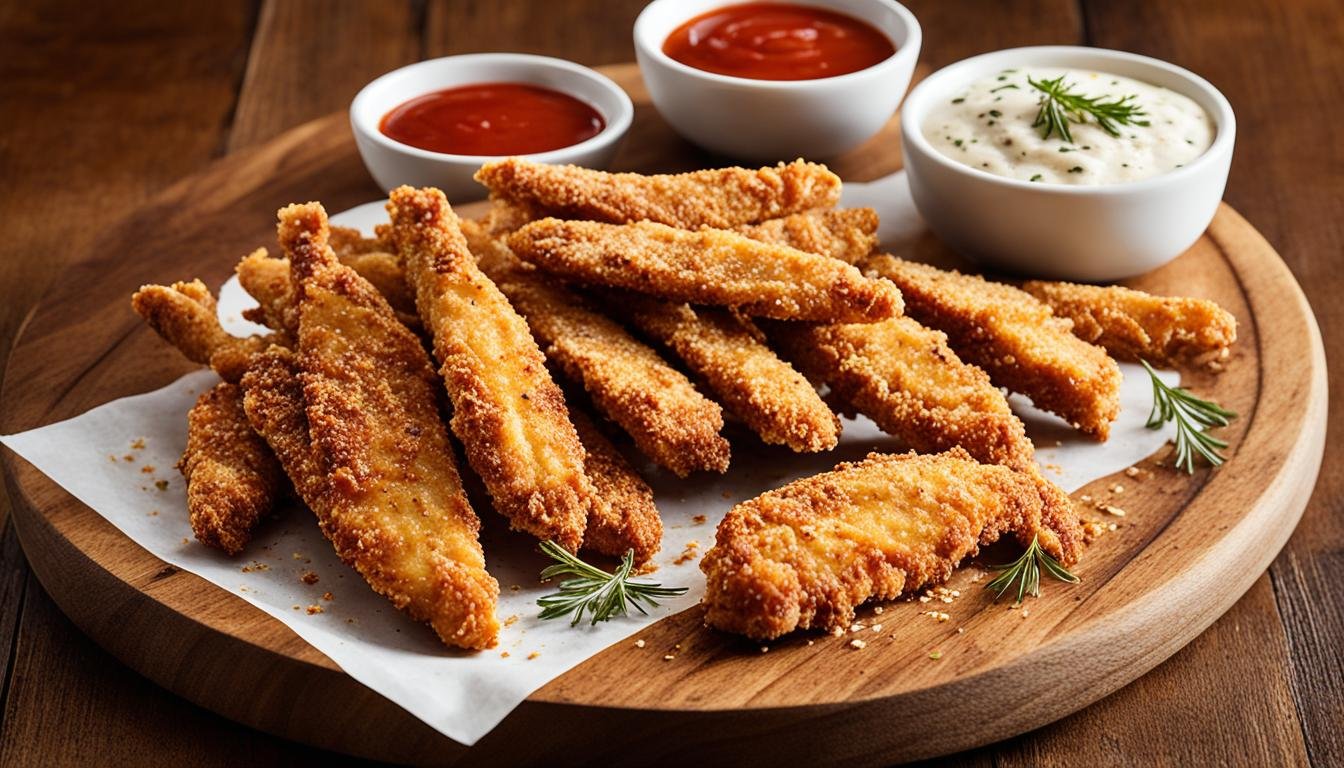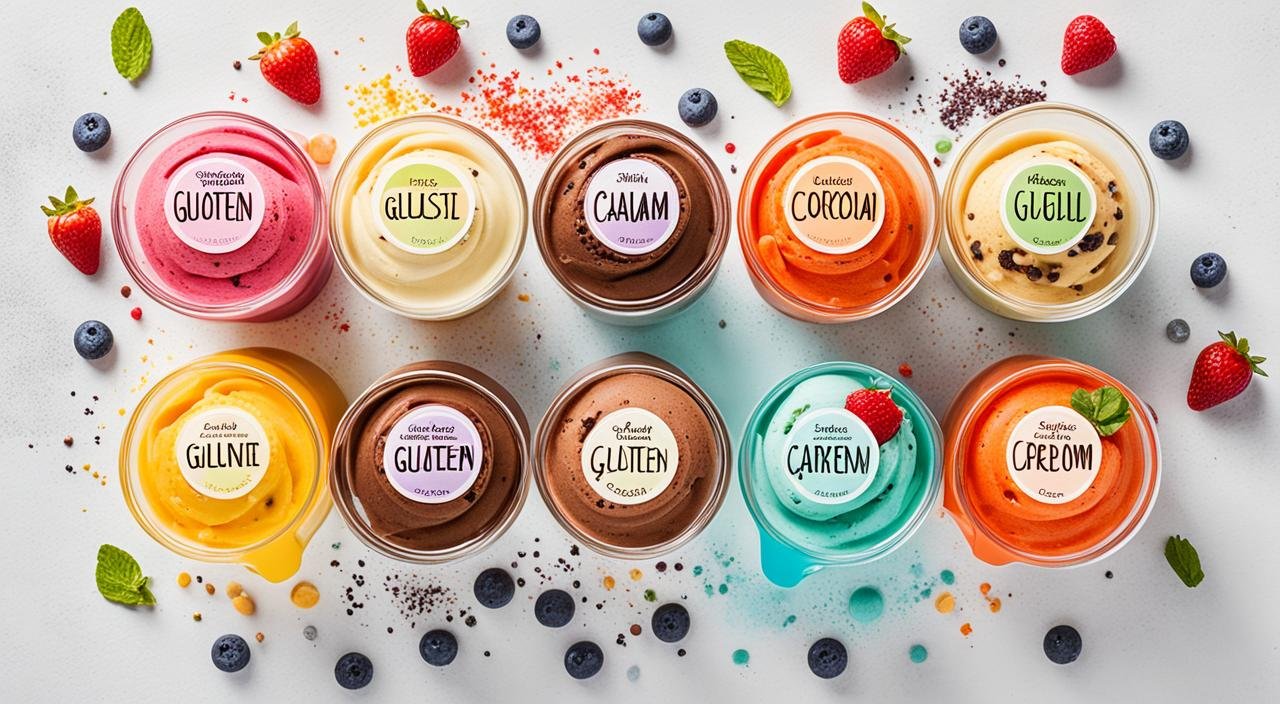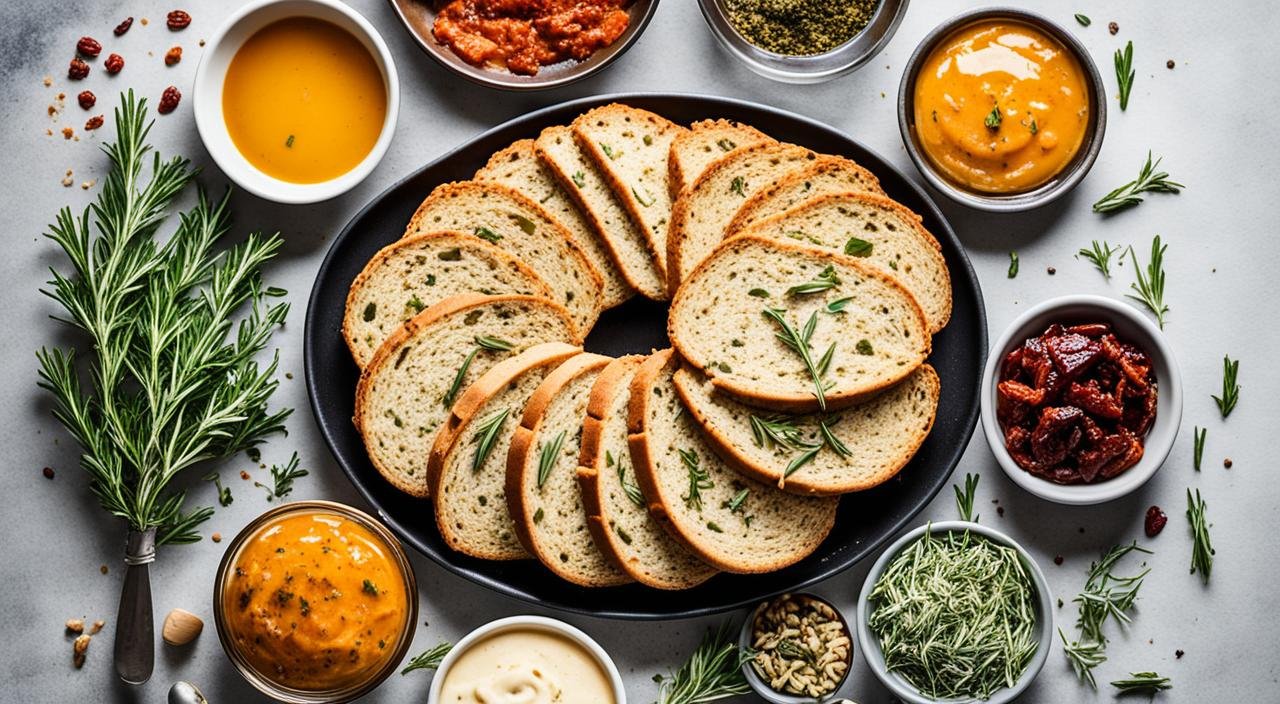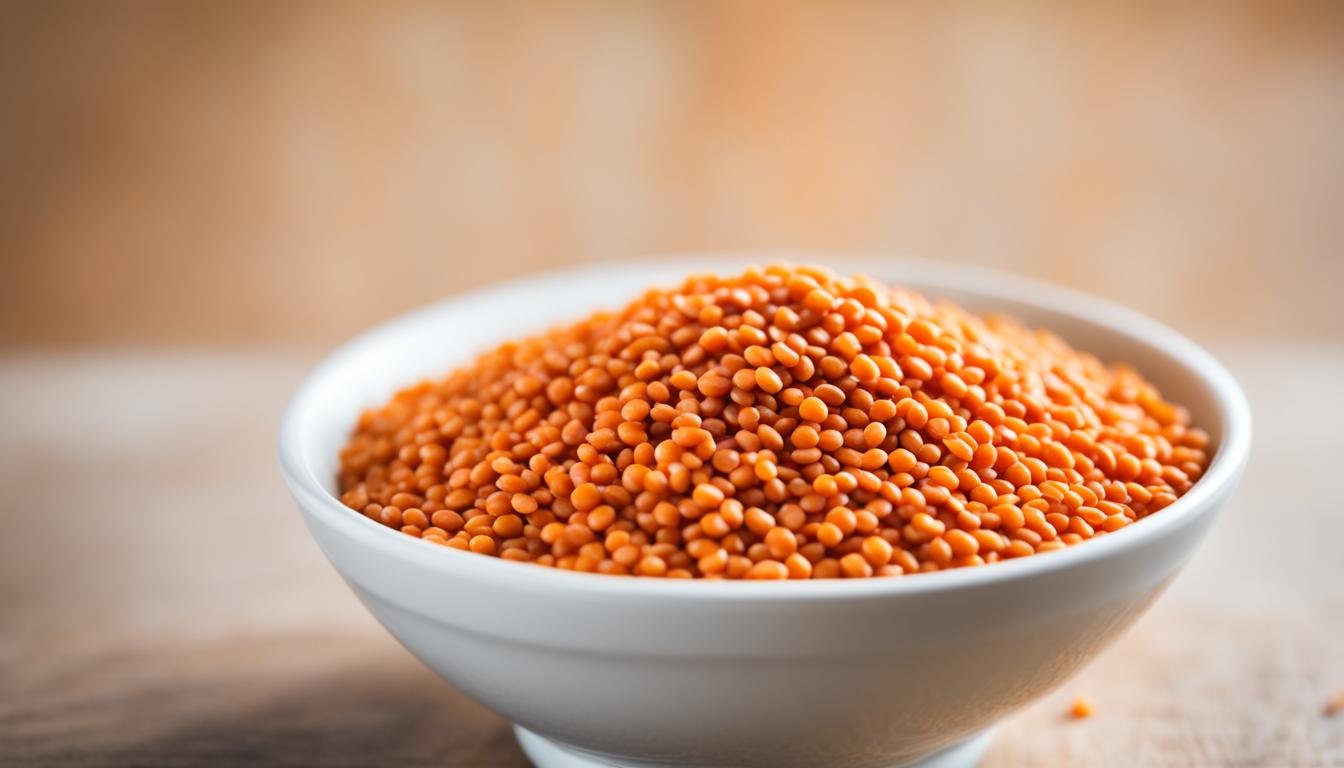Do you love the nutty, fluffy texture of couscous but worry about gluten? Curious! Is Couscous Gluten Free? More people are going gluten-free, making it key to know if couscous is okay for those with celiac disease or gluten sensitivity. We’ll look into couscous and gluten, find the best gluten-free options, and share a tasty Moroccan-style recipe for everyone.
Key Takeaways
- Traditional couscous is made from semolina flour, which contains gluten from wheat.
- Gluten-free couscous alternatives are now available, often made from corn, maize, or cassava flour.
- Cooking gluten-free couscous requires slightly different techniques to achieve the right texture.
- Quinoa and brown rice are also suitable substitutes for couscous in gluten-free recipes.
- With the right ingredients and preparation, you can still enjoy the flavors of couscous without the gluten.
What is Couscous?
Couscous is a key dish in Middle Eastern cuisine and Mediterranean cooking. It comes from durum wheat semolina flour. Couscous looks like rice or barley but tastes like pasta.
Traditional Couscous Ingredients
To make traditional couscous, you start with semolina flour. Then, you roll it into small balls. After steaming and drying, you get couscous with a special taste and feel.
The main ingredients are:
- Durum wheat semolina flour
- Water
- Salt (optional)
Water and salt are added to the semolina flour. They help the couscous grains stick together. This makes the couscous taste better and feel just right.
History of Couscous
Couscous is as old as the hills! It first showed up in North Africa way back in the 7th century. People say Berber tribes came up with it. The little grains spread like wildfire across North Africa and into parts of Europe. In Morocco, they call couscous the “blessed seed” because it’s so important to their food.
Is Couscous Gluten Free?
No, traditional couscous is not gluten-free. It’s made from semolina, a flour from durum wheat, which has gluten. People with celiac disease, wheat allergies, or gluten sensitivity should not eat couscous. It can cause bad reactions.
Couscous has a lot of gluten, about 27% from semolina. Durum wheat flour in couscous has more gluten than regular wheat. This makes couscous not good for a gluten-free diet.
| Gluten-Free Couscous Alternatives | Nutritional Benefits |
|---|---|
| Quinoa | Rich in fiber, antioxidants, and several vitamins and minerals like iron, folate, manganese, vitamins B6, and E. Considered a good vegetarian source of protein. |
| Millet | Offers more protein than most gluten-free grains and has a nutty, sweet flavor. |
| Fonio | A gluten-free grain that highlights the nutty flavor of couscous. |
| Sorghum | A nutty, sweet couscous substitute. |
| Cauliflower Rice | Similar in size to couscous and offers a low-carb, gluten-free alternative. |
When looking for gluten-free couscous, check the ingredients label. Make sure it says gluten-free and has a gluten-free certification. This ensures it’s safe for those with celiac disease or gluten sensitivity.
Gluten Content Comparison
Couscous is pretty much a gluten bomb. It has about 27% gluten, which is a lot! To put that in kid terms, if bread were a water balloon, couscous would be like three water balloons stuck together. It has way more gluten than regular bread or even pasta.
Gluten-Free Couscous Alternatives
For those on a gluten-free diet, there are many tasty and healthy options besides traditional couscous. You can find everything from corn-based products to ancient grains like quinoa and millet. These gluten-free substitutes come in different flavors and textures.
Store-Bought Options
When you’re shopping for gluten-free couscous alternatives, you’ll see many choices. Some top picks include:
- Corn-based couscous: Brands like Asda, Clearspring, and Tesco sell gluten-free couscous made from maize or corn. It’s naturally gluten-free.
- Quinoa: This seed is a great couscous substitute. It has a similar texture and taste.
- Millet: Millet is another gluten-free grain that can be like couscous in texture.
- Cauliflower rice: A low-carb choice that can replace couscous. But, it might need more seasoning.
What about Rice! Is rice gluten-free? Read it.
These gluten-free couscous alternatives are not just tasty. They also have lots of nutritional benefits. They’re perfect for changing up your meals or for dietary needs. These options are both tasty and versatile.
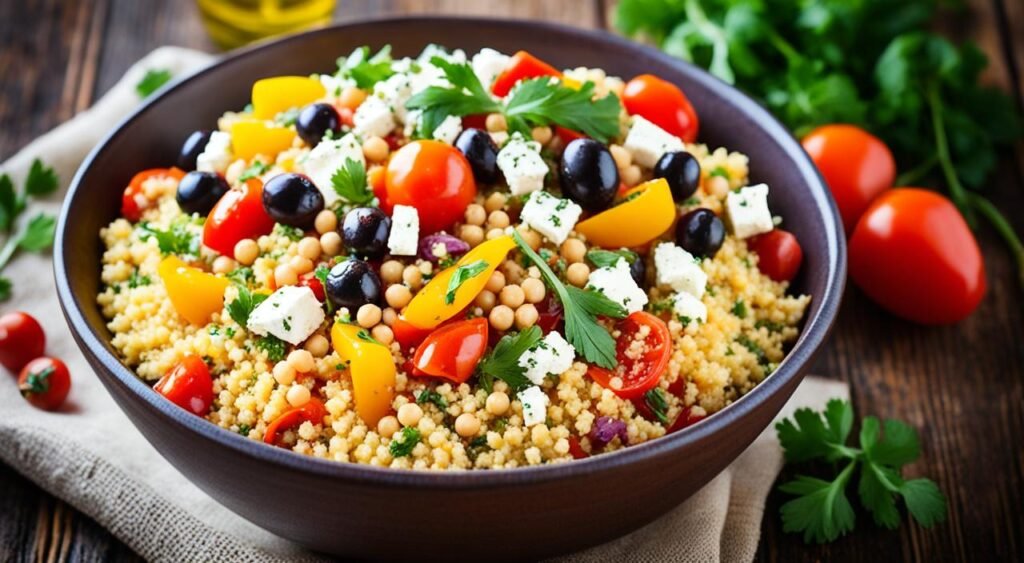
Cross-Contamination Risks
Even if you buy gluten-free couscous, you’ve got to watch out! It’s like when you use the same spoon for peanut butter and jelly – a little bit can mix in. Factories that make regular and gluten-free couscous might accidentally mix them up. For people who can’t have any gluten at all, that’s bad news bears.
Reading Food Labels
Reading food labels is like being a detective. You’ve got to look for sneaky words that mean gluten. Words like “wheat,” “barley,” and “rye” are dead giveaways. But sometimes gluten hides behind tricky names like “malt” or “modified food starch.” Always check the fine print!
Gluten-Free Certification
Some foods have a special “Gluten-Free” stamp. It’s like a gold star that says, “This food is safe for people who can’t eat gluten.” To get this stamp, foods have to have less than 20 parts per million of gluten. That’s super tiny – like finding one piece of couscous in an Olympic-sized swimming pool!
Cooking Gluten-Free Couscous
When cooking gluten-free couscous, always read the package instructions. Gluten-free couscous, made from corn or other grains, cooks faster. But, it can become mushy if cooked too long.
To improve the flavor and texture of your gluten-free couscous, use broth or stock for cooking. This trick greatly enhances the moisture and taste of the dish.
After cooking, rinse the gluten-free couscous with cold water. This removes extra starch. It keeps the couscous light and fluffy.
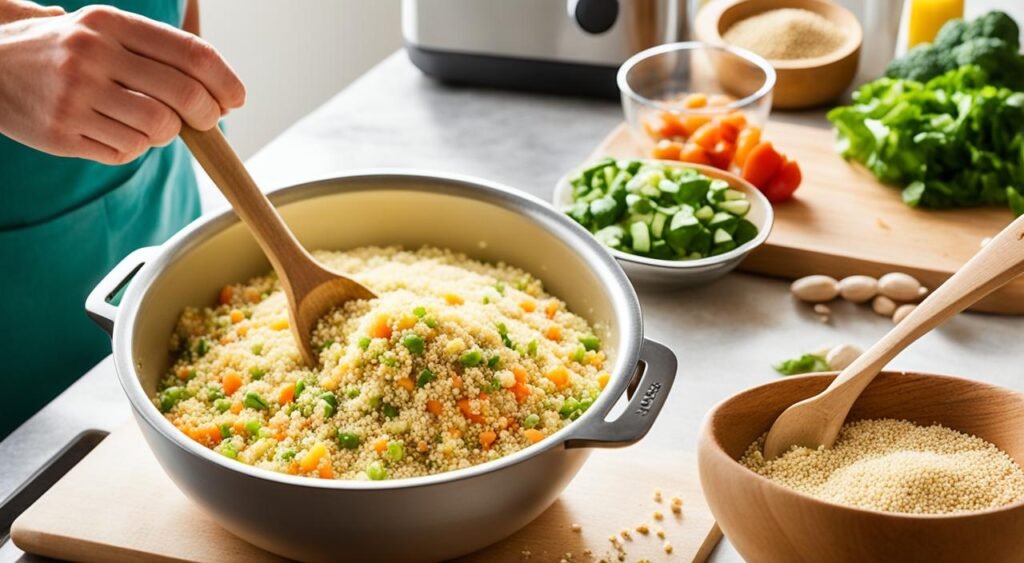
- Use a lower heat and cook for less time to avoid mushy couscous.
- Fluff the couscous with a fork after cooking for even moisture and grains.
- Try different cooking liquids like vegetable or chicken broth for better flavor.
- Add herbs, spices, or aromatics to the cooking liquid for extra deliciousness.
Follow these tips for perfectly cooked gluten-free couscous. It will have great texture and moisture. Plus, it will be flavorful and a great addition to your meals.
Common Mistakes
People mess up with gluten-free cooking all the time. It’s easy as pie to make mistakes! Some folks think all grains have gluten (nope!). Others forget to check if their spices are gluten-free. And a big no-no is using the same toaster for gluten-free and regular bread. It’s like mixing up your socks – it doesn’t work!
Substitutes for Couscous
If you can’t find gluten-free couscous, there are other grains you can use instead. These grains are not only gluten-free but also taste great and are good for you. They look and feel like couscous but have their own special tastes and health benefits.
Rice
Plain brown or white rice is a simple substitute for couscous. It’s easy to find and has a fluffy texture. This makes it a versatile base for many dishes.
Quinoa
Quinoa is a great gluten-free choice instead of couscous. It’s packed with nutrients and tastes nutty. Quinoa works well in many recipes, just like couscous.
Millet
Millet is another grain that looks and feels like couscous. It’s gluten-free and mild in taste. Millet is a good substitute for couscous in many dishes.
| Gluten-Free Couscous Alternatives | Texture | Flavor | Nutritional Profile |
|---|---|---|---|
| Rice | Fluffy | Mild | High in carbohydrates, some fiber and minerals |
| Quinoa | Light, fluffy | Nutty | High in protein, fiber, and a range of vitamins and minerals |
| Millet | Grain-like | Mild, slightly nutty | High in fiber, minerals, and B vitamins |
These couscous alternatives, like rice, quinoa, and millet, offer tasty and healthy choices. They are great for those looking for gluten-free grains to use instead of traditional couscous in their cooking.
Statistics
Did you know that about 1 in 100 people have celiac disease? That’s like having 3 kids in every school who can’t eat gluten. And get this – the gluten-free food market is growing faster than a weed! It’s expected to reach $8.3 billion by 2025. That’s a lot of gluten-free couscous!
Gluten-Free Couscous Recipes
Gluten-free couscous is great for many cuisines. Try it in a Moroccan-style dish for a tasty side or light meal. This recipe brings out Moroccan spices and flavors.
Moroccan-Style Gluten-Free Couscous
This recipe mixes warm spices, fresh veggies, and sweet raisins. Cumin, cinnamon, turmeric, and garlic add a deep flavor. It’s perfect with grilled meats or as a main dish.
To make this, you’ll need:
- 2 cups uncooked gluten-free couscous
- 1 tablespoon olive oil
- 1 onion, diced
- 3 cloves garlic, minced
- 1 teaspoon ground cumin
- 1 teaspoon ground cinnamon
- 1 teaspoon ground turmeric
- 1 cup vegetable broth
- 1/2 cup raisins
- Salt and pepper to taste
Start by heating oil in a big skillet over medium heat. Cook the onion and garlic until they smell good, about 3-5 minutes. Then, add cumin, cinnamon, and turmeric. Cook for a minute, stirring often to bring out the smells.
After that, mix in the couscous and broth. Bring it to a boil, then lower the heat and cover. Simmer for 15 minutes, or until the couscous is soft and the liquid is gone. Use a fork to fluff it up and add raisins. Season with salt and pepper.
Enjoy this Moroccan couscous warm, topped with parsley or cilantro if you like. It’s a gluten-free dish that brings the taste of Morocco to your table.
Conclusion
In this article, we looked at traditional couscous and its gluten content. We also talked about gluten-free couscous alternatives. Options like cauliflower rice and grain-free pasta are great for those on a gluten-free diet.
We gave tips on how to cook gluten-free couscous. We also shared a recipe for a tasty Moroccan-style couscous dish. This will help you in your cooking adventures.
There are many ways to enjoy couscous without gluten. You can find gluten-free products or make your own with different grains. Whether you want a simple side dish or a big Moroccan feast, there are plenty of gluten-free couscous options for you.
FAQs
Is couscous healthier than rice?
It’s kind of like comparing apples and oranges. Couscous has a bit more protein and vitamins than white rice. But brown rice beats couscous in fiber. Both are pretty good for you, so it depends on what your body needs.
What is couscous made of?
Couscous is made from tiny balls of durum wheat semolina flour. It’s like really small pasta. They mix the flour with water, roll it into tiny balls, and then dry it. Simple as that!
Is couscous gluten-free?
No, traditional couscous isn’t gluten-free. It’s made from wheat, which has gluten. But don’t worry! There are gluten-free versions made from corn or rice if you need to avoid gluten.
I’m Dr. Shivani, a Kolkata-based nutritionist since 2015. After 10 years of igniting a love for healthy eating in young minds as a High School nutritionist teacher, I now help individuals unlock their full potential through personalized diet plans. My passion for writing and sharing nutrition knowledge (through blogs and observations) keeps my practice fresh and fuels my love for the field!

